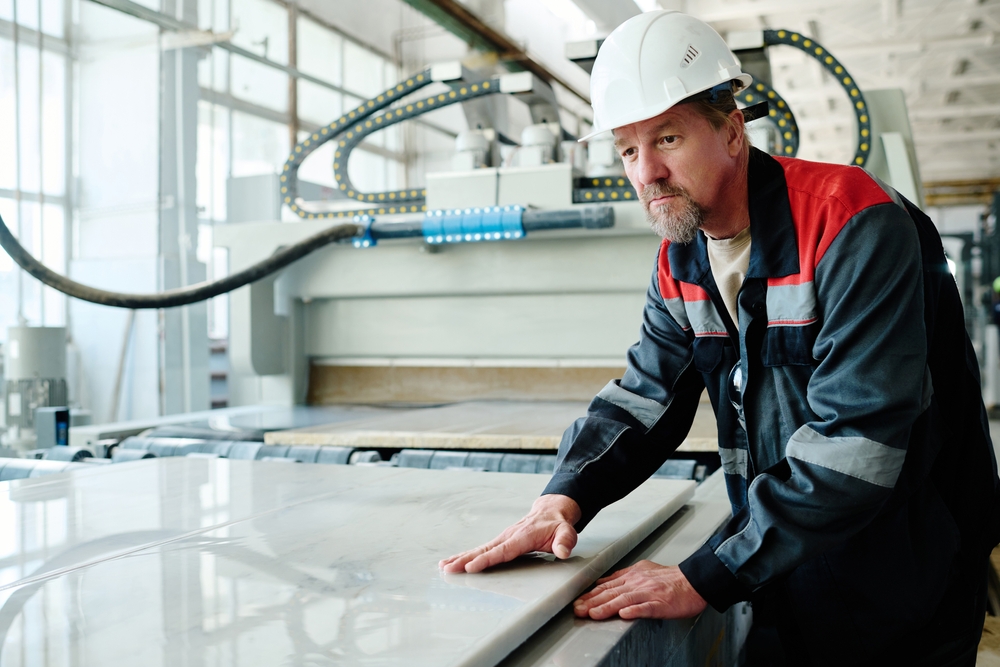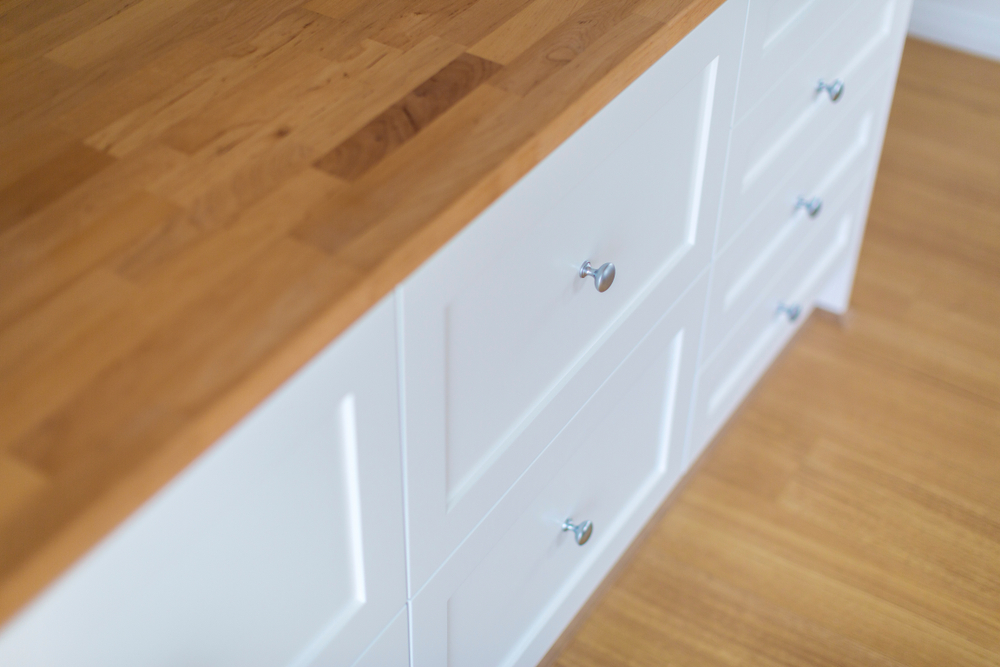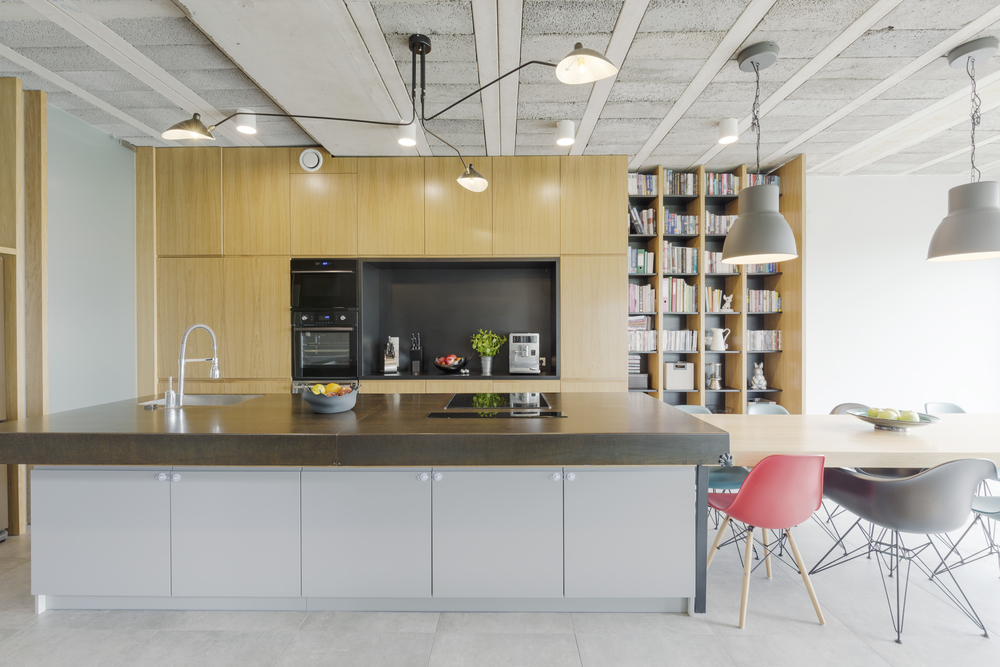Popular Kitchen Benchtop Materials (and What They Really Cost)
August 1, 2025
Whether you are updating an older kitchen or designing a brand-new space, your choice of benchtop can significantly influence the overall look, feel, and function of the kitchen. At Central Coast Kitchens & Bathrooms, we understand that the right surface can bring your design together, enhance your layout, and stand up to daily use.
In this guide, we explore the most popular benchtop materials currently available in Australia. We explain what they cost, how they perform, and what to consider before making your decision. Whether your priority is durability, style, or cost, there is a benchtop material to suit your needs.
Note: Due to recent safety regulations, traditional engineered stone is no longer available in Australia. However, low-silica and silica-free alternatives are now on the market, offering similar looks and performance without the health risks. We cover these options in detail below.

While traditional engineered stone containing high crystalline silica has been banned in Australia, there are now safe, low-silica and silica-free alternatives that offer the same clean, modern look, without the health risks.
These new surfaces are designed to mimic the durability, finish, and colour range of traditional quartz while complying with Australian regulations. They offer a practical and attractive solution for homeowners who want the style of engineered stone with added peace of mind.
Under current laws, engineered stone products with less than 40% crystalline silica may be used if they meet strict safety and approval criteria. These products often use resin-based binders combined with recycled materials, such as glass or non-silica minerals, to create a hard-wearing, attractive benchtop surface.
In some states and territories, these low-silica products must be approved by regulators before they can be installed. Always check with your supplier and installer to confirm compliance.
Additionally, completely silica-free options, such as sintered stone, porcelain surfaces, and recycled glass benchtops are widely available and do not fall under the ban. These materials provide similar performance and style to engineered stone, with no crystalline silica content.
Here are some of the most common engineered stone alternatives now used in Australian kitchens:
These alternatives are ideal for homeowners who want a modern, uniform benchtop appearance without the risks associated with traditional engineered stone.
The cost of low-silica and silica-free benchtops varies depending on the product and installation:
Pricing can vary based on thickness, brand, edge profiles, and fabrication requirements. These products are often positioned between laminate and natural stone in terms of cost.
Laminate benchtops remain a go-to choice for homeowners seeking a stylish kitchen upgrade without the high price tag. Today’s laminate options are a far cry from the dated versions of the past. Modern finishes now mimic the appearance of premium materials like stone and timber, offering impressive design flexibility for a fraction of the cost.
Laminate benchtops are made by bonding decorative paper and resin to a particleboard or MDF (medium-density fibreboard) core. This creates a lightweight, low-maintenance surface that is simple to install and widely accessible. Here’s why it continues to be a popular option:
The variety of laminate finishes has expanded dramatically. Whether your kitchen style is coastal, classic, or minimalist, laminate offers something to suit:
Expect to pay between $300 and $600 per linear metre, installed. Pricing depends on thickness, brand, edge detail, and labour. This makes laminate ideal for large kitchens, investment properties, or budget-conscious upgrades.

For those who want to make a strong visual statement, natural stone benchtops offer unmatched beauty and prestige. Granite and marble are among the most sought-after materials in high-end kitchen designs. Their unique patterns and organic textures add a sense of luxury that is difficult to replicate with manufactured alternatives.
While natural stone requires more care and a larger investment, many homeowners consider it worth the effort for the timeless look and long-term value it brings.
Though often grouped together, granite and marble have very different properties. Understanding their characteristics can help you choose the right fit for your lifestyle.
Granite
Marble
Natural stone is the material of choice in premium home builds and luxury renovations. It’s especially well-suited to:
No two slabs are alike, which adds to the exclusive appeal of natural stone surfaces.
Natural stone comes with a premium price tag, generally ranging from $1,200 to $2,500 per linear metre installed. Pricing depends on stone rarity, slab size, edge profile, and installation requirements. Exotic marble varieties or imported granite can cost significantly more.

Timber benchtops bring warmth, character, and natural beauty into the kitchen. With their organic grain patterns and tactile surface, timber tops can soften modern designs or enhance rustic and coastal styles. They age gracefully, developing patina and depth over time, and can be sanded and resealed to refresh their look, making them a flexible long-term choice.
From heritage homes to beachside retreats across the Central Coast, timber offers a welcoming, grounded feel that connects your kitchen to nature.
Choosing the right timber species affects both the appearance and performance of your benchtop. Hardwoods are preferred for their durability and rich grain detail. Popular options include:
Each timber type offers its own variation in tone and texture, ensuring a unique finish every time.
Timber suits a wide range of interior aesthetics and works beautifully in combination with other materials:
Timber can be used throughout the kitchen or as an accent feature, such as on an island bench or breakfast bar.
Expect to pay between $800 and $1,500 per linear metre installed. Price depends on timber species, thickness, finish, edge profile, and whether the timber is locally sourced. Hardwoods like blackbutt and spotted gum tend to be on the higher end due to their durability and visual appeal.

For homeowners seeking something bold and contemporary, stainless steel and concrete benchtops deliver a distinctive, architectural edge. These materials are favoured in designer kitchens and industrial-style homes for their raw appeal, durability, and custom finishes. While less common than stone or timber, they offer unique benefits for the right setting.
Stainless steel and concrete stand out for their ability to blend form and function. They are ideal for homeowners and renovators who want a strong design statement without compromising on everyday performance. Common reasons to choose these materials include:
These materials suit homes that embrace bold, modern design with a functional edge.
Stainless steel is a staple in commercial kitchens for good reason. It offers a sleek, professional look and a practical, easy-to-maintain surface.
Cost per metre installed: $1,000–$1,500
Pricing depends on the steel grade, thickness, and whether the bench is custom-fabricated.
Pros
Cons
Concrete benchtops are custom-poured to fit your kitchen layout, offering endless design possibilities. You can choose your own colour, texture, finish, and even embed decorative elements for a truly bespoke surface.
Cost per metre installed: Starting at $1,200
Final cost varies based on slab thickness, finish, reinforcement, and installation complexity.
Pros
Cons
A kitchen benchtop is one of the most used and visible surfaces in the home. Its material not only shapes the overall look of the space but also affects how your kitchen performs day to day. When choosing a benchtop, it is important to weigh factors like durability, maintenance, and cost alongside appearance.
Laminate remains a practical choice for budget-conscious renovations, while natural stone delivers standout visual impact and long-term value. Timber brings warmth and individuality, while stainless steel and concrete offer durable, contemporary options for modern and industrial-style homes.
With the ban on high-silica engineered stone now in place, homeowners can explore a growing range of safe, compliant alternatives. Porcelain, recycled glass surfaces, and low-silica composites offer the same clean look and reliable performance without the associated health risks.
Each material has its own strengths and limitations. By understanding how these surfaces perform over time and considering what suits your lifestyle and design goals, you can make a confident and well-informed choice for your kitchen project.